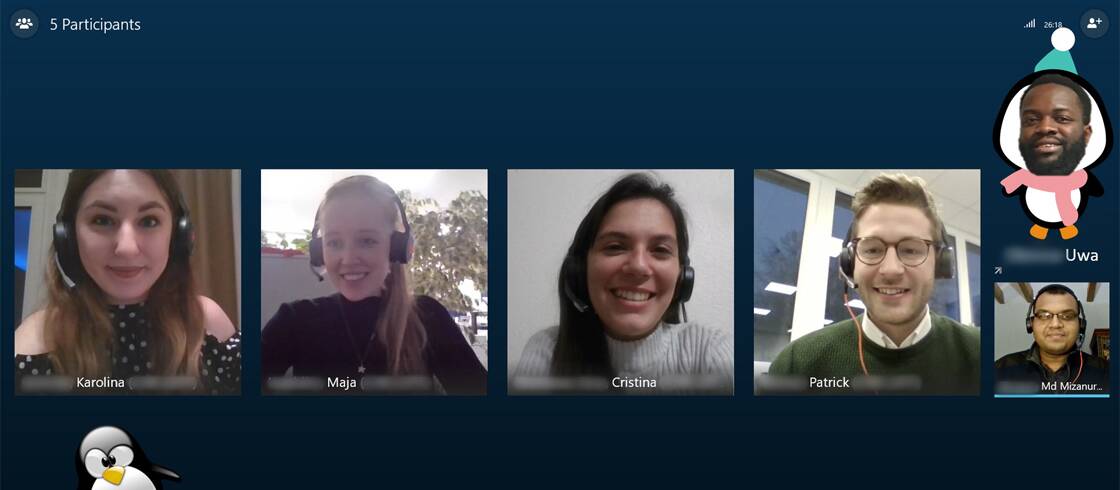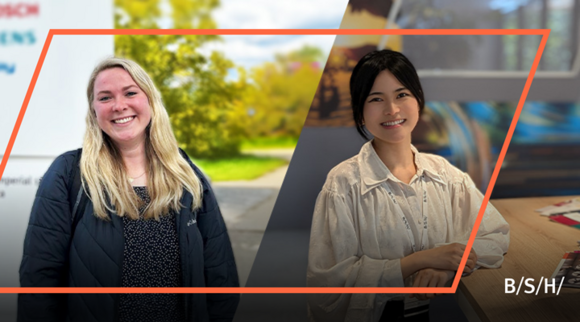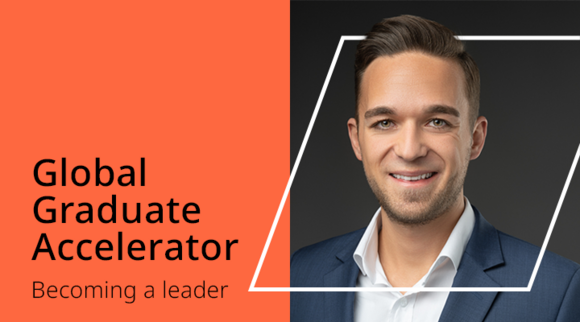This year’s trainee challenge: Teaming up for circular economy
Reading time for this article: 6 minutes
As part of our Global Graduate Accelerator program, a diverse group of international trainees has taken up the challenge to create a more sustainable vacuuming experience based on a circular business model. Learn more!
To strengthen cross-functional collaboration in an international team setting, each year, our trainee group gets to tackle a challenge together and present the results to internal stakeholders. This year, BSH CEO Carla Kriwet serves as a patroness to the trainees’ challenge and looks forward to their creative solutions. In an initial kick-off meeting, the group already had the chance to exchange ideas.
For a couple of months, the diverse group dives into an exciting task around the main topic of circular economy while gaining first-hand experience with agile methods and collaborating remotely. Furthermore, they benefit from expanding their networks among their new BSH colleagues and gain a deeper understanding of what it means to strive for more sustainable business solutions and to always focus on consumer centricity.
Karolina and Mark who are both heading their respective teams, tell us more about this year’s challenge and what they hope to archive. Read more!
Interested in becoming part of the Global Graduate Accelerator 2021/22?
The application phase starts on February 1st and ends on February 28th, 2021 with the program starting September 1st, 2021. Our 12 months Global Graduate Accelerator is open to all university backgrounds.
You want to learn more about our Global Graduate Accelerator or even apply yourself?
Follow this link: graduates.bsh-group.com
What is the trainee challenge and how does it work?
Karolina: The trainee challenge is a unique part of the Global Graduate Accelerator at BSH. Besides the fact that we are able to rotate and work with different departments during the program, we also have this great opportunity to work on an exciting project from scratch and develop it as a group. After our first department, the UX coaches gave us proper training about agile methods.
Afterward, we entered a design-thinking sprint where we got to know our challenge topic and were divided into two different groups – Penguins and Dolphins 🙂.
During this sprint, with guidance from coaches, we were able to take a deep dive into the topic by interviewing users and conducting brainstorming sessions. We learned how important it is to really understand the consumers’ needs and to find solutions for those.
Later, we prepared a prototype of our idea and tested it with our stakeholders. The next step was to enter the scrum sprint where we would build on our idea and iterate it. Every three days we were presenting findings and results to stakeholders who afterward gave us feedback. Every four weeks we have a review meeting with our stakeholders.
What is the topic of this year’s trainee challenge?
Mark: This year, we are tasked with creating a sustainable vacuuming experience, specifically creating an eco-system that incorporates future-proof ecological business models that move us away from the current linear model to one that is more circular.
Due to this, we must consider different aspects like what happens at the end of a product’s life, resource consumption and efficiency and the consumer experience/journey, all while striving to make a viable pilot at the end of the challenge.
Why are you convinced by the topic and your idea?
Karolina: Over the first few weeks, we were constantly researching and iterating our idea. These iterations were always based on new insights like interviews with users, stakeholders’ feedback, and feasibility information. Every sprint we tried to dig deeper and deeper to the root of the challenge to find the best solutions for our target group. We knew we were on a good path when we finally defined the main pain points of our consumers and when our idea was a real benefit and a pain relief for those people.
Mark: I’m convinced because it’s needed. It is a necessary step for the industry to move away from the linear model to a circular one.
What challenges can you face within this project and how do you plan to meet them?
Karolina: Our team spirit and enthusiasm are always there and together we find solutions. It might seem that in the future the problem would be the physical distance between us, as we all moved now to our second department, where team members are working in different BSH locations. However, with the coronavirus pandemic and remote working style from the beginning of our program, this does not seem like a limitation for us. In the time where we were facing any problems, our coaches were always there for us and it appeared that the only thing we needed was the reassurance that we are on the right track.
Mark: Continuity. We started this challenge working five days a week, exclusively focused on this task. However, now that we have moved to our second department, we will also have other tasks and objectives on our minds. Moving forward, we will work on the challenge one day a week, so finding the same flow we worked with before despite the lack of continuity will be important if we are to be successful.
What are you most looking forward to?
Karolina: As we ended our sprints with an idea that the entire team is excited to work on, I am looking forward to diving deep into it. I love working together as we really found our synergy and I have a feeling that we can really develop the idea if we continue with a positive attitude. I am most impatient to develop a more detailed prototype of our idea and come back to our users to see if they will like the solution as much as we do 🙂.
I would also love to hear the BSH experts’ opinions to find out how to bring it to life.
Mark: I look forward to getting back with the team. It was fascinating to see how each team member works and their individual contributions to the team. Even during the long days, we kept things light and took some time to joke around, all while still being productive.
So, I look forward to feeling that comradery again because we have such a fun team. Even during the challenging and stressful times, we were able to maintain a productive and supportive environment.

What did you learn through the challenge so far?
Karolina: Definitely asking the right questions, especially to our consumers. I noticed how sometimes it is more important to ask the right question to the right person than having hundreds of answers for the wrong question. Another amazing finding was how the ideas were just unlimited when you work within a group. It felt like nothing can stop us when we started building on each other’s ideas! Taking part in this challenge is also an amazing networking possibility. We have exchanges with many BSH colleagues, and this is especially important for us as Trainees to learn more about our company, culture, departments and development processes.
We are always eager to learn more and meet with more people to hear opinions so feel free to contact us! At the end I also want to say how much fun this challenge has been so far. I am very happy it is a part of our GGA adventure.
Mark: Communication matters even more so on a virtual team. Whenever there was a misalignment within the team on an important decision we needed to make, respectful communication was one of our greatest weapons. This allowed everyone to feel included and heard, even if we ultimately went in a different direction.
At the end of three weeks, working together every day, we really came together as a group and it’s apparent by how much more compassionate, connected, and understanding we are of each other. So, my biggest takeaway was that clear and open communication is a vital component of successful teams, especially when all interactions are done virtually.




